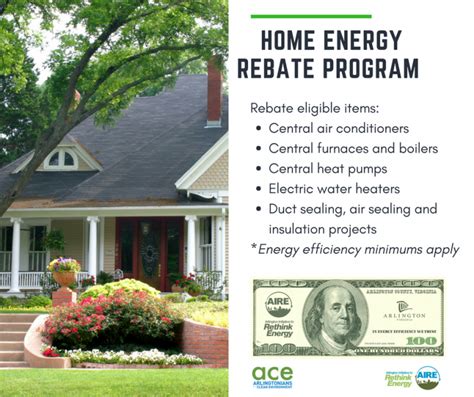In today’s world, energy efficiency is more than just a trend; it’s an essential part of sustainable living. Not only does it help reduce carbon footprints, but it also leads to significant savings on utility bills. One of the best ways to make your home more energy-efficient is by taking advantage of home energy rebate programs. This comprehensive guide will walk you through the various types of rebate programs available, tips for maximizing your savings, and how to get started.
Understanding Home Energy Rebate Programs
Home energy rebate programs are incentives offered by federal, state, and local government agencies, as well as utility companies. These programs aim to encourage homeowners to invest in energy-efficient technologies or improvements. They typically include rebates for items such as:
- Energy-efficient appliances
- Home insulation
- Energy-efficient windows
- Smart thermostats
- Heating and cooling systems
The financial incentives can vary significantly based on location and the specific program, making it crucial to research options available in your area.
Types of Rebate Programs
1. Federal Programs
The federal government provides several incentive programs, including tax credits for energy-efficient home improvements. One of the most popular is the Residential Energy Efficiency Tax Credit, which offers a percentage back on qualifying expenses. This includes the cost of solar panels, geothermal heat pumps, and more.
2. State and Local Programs
Many states run their own rebate programs tailored to the needs of their residents. Programs like the Energy Star program encourage homeowners to install energy-efficient products. Furthermore, various utility companies provide rebates or discounts for consumers who opt for energy-efficient appliances or complete energy audits.
3. Utility Company Incentives
Local utility companies often offer rebates that can offset the cost of energy-saving home improvements. These rebates may cover older, inefficient appliances, lighting improvements, or even energy audits to help identify areas for efficiency upgrades. Contact your utility provider for an overview of what’s available.
Steps to Maximize Your Savings
Step 1: Conduct an Energy Audit
The first step to maximizing your savings is to conduct a home energy audit. This audit will provide data on where your home is losing energy and what you can do to improve efficiency. Many local utility companies offer free or discounted energy audits as part of their programs.
Step 2: Research Available Programs
Once you have a clear understanding of your home’s energy usage, research the rebate programs that are available to you. Websites such as Energy.gov can help you find specific programs based on your state and utility provider.
Step 3: Prioritize Your Improvements
Based on the results of your energy audit and available programs, prioritize the changes that will deliver the most savings. This could mean replacing an old heating system or sealing air leaks around windows and doors. Focus on improvements that not only qualify for rebates but also offer substantial long-term savings.
Step 4: Keep Documentation
As you make energy-efficient upgrades, maintain detailed records of your expenses and the upgrades that you make. You will need this documentation when applying for rebates.
Step 5: Apply for Rebates
After completing your improvements, submit for rebates as soon as possible. Be sure to follow all guidelines listed by your local and federal programs to ensure you receive your full rebate.
Success Stories
Many homeowners have successfully transformed their homes and saved money by participating in energy rebate programs. For example, the Smith family applied for rebates on their new energy-efficient HVAC system and insulation in their home. After completing their upgrades, they saw a 30% decrease in their energy bills, effectively paying off their investments in less than three years.
Conclusion
Energy efficiency not only benefits your wallet; it also contributes positively to the environment. By taking advantage of home energy rebate programs, you can offset the cost of renovations, upgrades, and more. In the long run, these programs facilitate a sustainable lifestyle, making energy efficiency accessible and affordable. Don’t miss out on potential savings—conduct an energy audit, research available programs, and take proactive steps to enhance your home’s energy performance. It’s your gateway to maximizing savings while contributing to a greener planet.
FAQs
What types of upgrades qualify for energy rebates?
Eligible upgrades typically include energy-efficient appliances, insulation, heating/cooling systems, windows, and more. Always check your local program requirements for specifics.
How do I apply for home energy rebates?
Applications for home energy rebates can usually be submitted online or via mail. Be sure to collect all necessary documentation, like receipts and proof of installation, to support your application.
Are energy rebates worth it?
Yes! Energy rebates can significantly offset the costs of energy-efficient upgrades, allowing homeowners to save money in the long run on their utility bills.
What if I have questions about the rebate process?
If you have questions about specific rebates, contacting your utility provider or the organization offering the rebate is a good approach for clarification.
Can I combine different rebates for the same project?
In many cases, you can combine federal, state, and local rebates, but there may be limits or restrictions. Always read the rules associated with each program to ensure compliance.
Download Home Energy Rebate Programs
